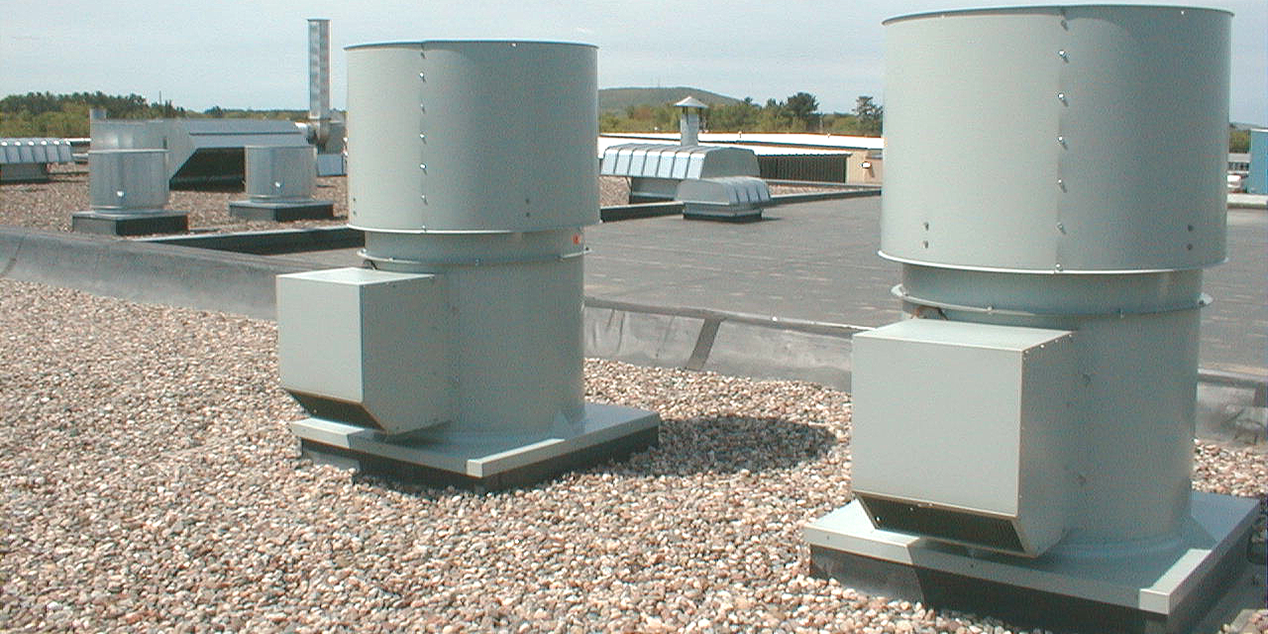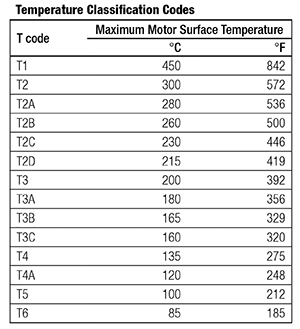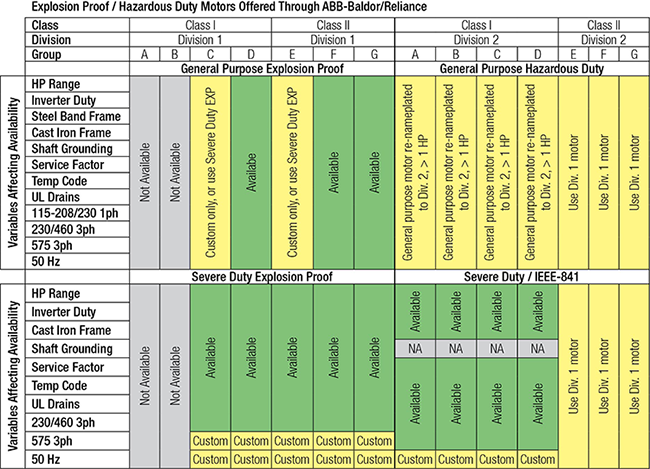How to Select the Proper Explosion-Proof Motor for Your Fan Application

The National Electric Code standard NEC 500 defines hazardous locations as those areas where fire or explosion hazards may exist due to the presence of substances that are flammable, combustible, or ignitable. The code breaks down these locations further into classes and divisions, defined with groups and temperature classifications indicating the required level of protection for the application. This information must be available when selecting the appropriate motor; otherwise, the motor may not meet the location requirements or be over-designed, costing more money.
Here’s a quick overview of how hazardous locations are defined by class, division, group, and temperature classification.
Class: Defines the type of hazard present
Class I – Created by the presence of flammable gases or vapors in the air, or flammable liquids, in sufficient quantities to be explosive or ignitable.
Class II – Created by the presence of combustible dust, suspended in the air, in sufficient quantities to be explosive or ignitable.
Class III – Areas where there are easily ignitable fibers or flyings present. These include cotton lint, flax, and rayon as examples. The fibers in a Class III area are not likely to be in the air but can collect around machinery or on lighting fixtures. (generally, not used in our industry)
Division: Defines the probability of a hazard
Division 1 - Normal conditions. Hazard is present in everyday production operations or during frequent repair and maintenance activities. Explosion Proof Motor Needed
Division 2 - Abnormal conditions. Hazard is confined in closed containers or closed systems (ventilation) and will be present only through accidental rupture, breakage, or unusual faulty operation. Hazardous Duty Motor Needed.
Class Groups: Specifically defines the hazard present
Class I Groups
Group Gas
A Acetylene
B Hydrogen, etc.
C Ethylene, etc.
D Hydrocarbons, Propane, fuels, solvents, etc. (Most common in HVAC industry)
Class II Groups
Group Dust Type
E Metal dust
F Coal, carbon dust
G Grain, sugar, plastic, or chemical dust
Temperature Classification “T-Codes”: Table 1 identifies the maximum absolute surface temperature developed by the motor under all conditions.
 |
| Table 1 |
To correctly specify and select a motor, all the above information is needed.
Class (I, II, III)
Division (1 or 2)
Group (A, B, C, D, E, F, G)
Temperature Classification (Txx)
Examples:
Class I, Div. 1, Group D, T3A (Gas/vapor, normal operation, Hydrocarbon, 356F)
Class II, Div. 1, Group F, T3A (Dust, normal operation, coal/carbon, 356F)
Many times, this information is not all available. Fan manufacturers can provide motors suited for the most common needs. For example, Greenheck provides HVAC hazardous duty and EXP motors with ratings for Class I or II, Division 1, Groups D, F&G with temperature classification of T3 or better in NEMA frame sizes.
Motor manufacturers offer a wide variety of hazardous duty and explosion-proof motors. It is important to know that equipment suitable for all hazard locations may not exist just because an NEC hazard location is defined. Table 2 uses the Greenheck example again, showing general EXP or hazardous duty motor availability.
 |
| Table 2: Hazardous duty and EXP motor availability |
The hazardous duty and Explosion Proof motor options in Table 2 cover what is commonly used in the HVAC industry for situations when a totally enclosed motor will not meet the requirements. Categories in the green area are available, while categories colored in yellow require a special design request. The design request may include modifications by the motor manufacturer or a suitable substitution. Categories in grey are not available. There may be applications involving contaminants outside of these specifications. In those cases, our recommendation is to consult with the manufacturer’s fan application staff or motor vendor to determine the appropriate enclosure and ensure proper fit on the exhaust fan.”


from